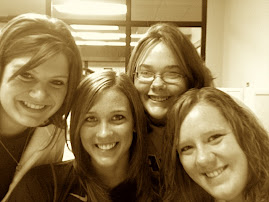Gothic fiction (sometimes referred to as Gothic horror) is a genre of literature that combines elements of both horror and romance...
History of the word Gothic and Gothic Literature:
‘Gothic’ refers to a mode of fiction dealing with supernatural or horrifying events. However, not all Gothic literature is concerned with the supernatural, and not all Gothic literature is horrifying. Rather, the term ‘Gothic’ as applied to literature refers to a kind of atmosphere or aesthetic that is hard to define.
Gothic literature is generally believed to have begun in the year 1765 with the publication of The Castle of Otranto, by Horace Walpole. It should be noted that this novel was published in the 18th century, after the philosophical movement known as the Enlightenment had attempted to bring reason to the world, and to banish superstition.
It is said that the Gothic writings originated from Europe, or they would set their stories in Southern Europe. They say this because most gothic writers were Protestants. Catholicism was seen as a superstitious form of Christianity, therefore closer to barbarism.
 The Castle of Otranto is about an Italian prince who schemes to avert the curse brought on his family when his grandfather usurped the principality of Otranto.
The Castle of Otranto is about an Italian prince who schemes to avert the curse brought on his family when his grandfather usurped the principality of Otranto.All top information came from: http://my.opera.com/quentinscrisp/blog/show.dml/11604
Characteristics of a Gothic work:
1. There is a victim who is hopeless against their torture.
2. There is a victimizer who is related with the evil and who's powers are accused to be supernatural.
3. The setting of the gothic story is at some point within impenetrable walls (physical or psychological) to heighten the victim's sense of hopeless isolation. The central gothic image is the cathedral or a haunted mansion within the walls which the victim is impristioned.
4. The setting is of mystery, darkness, and fear.
5. The victim is in awe of how powerful the victimizer is.
Romanticism has very little to do with things popularly thought of as "romantic," although love may occasionally be the subject of Romantic art. Rather, it is an international artistic and philosophical movement that redefined the fundamental ways in which people in Western cultures thought about themselves and about their world. It was partly a revolt against aristocratic social and political norms of the Age of Enlightenment and a reaction against the scientific rationalization of nature, and was embodied most strongly in the visual arts, music, and literature.One of the fundamentals of Romanticism is the belief in the natural goodness of man, the idea that man in a state of nature would behave well but is hindered by civilization.
Characteristics of Romanticism:
Resulting in part from the libertarian and egalitarian ideals of the French Revolution, the romantic movements had in common only a revolt against the prescribed rules of classicism. The basic aims of romanticism were various: a return to nature and to belief in the goodness of humanity; the rediscovery of the artist as a supremely individual creator; the development of nationalistic pride; and the exaltation of the senses and emotions over reason and intellect. In addition, romanticism was a philosophical revolt against rationalism.
(Enlightenment is a term used to describe a time in Western philosophy and cultural life centered upon the eighteenth century, in which reason was advocated as the primary source and legitimacy for authority.)

